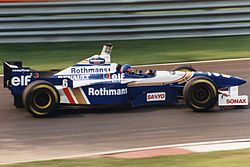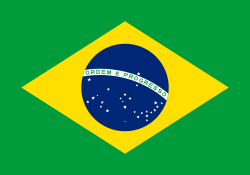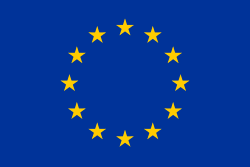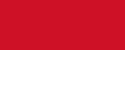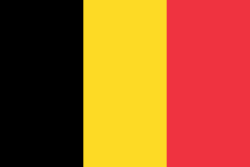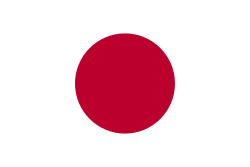Kanadas Grand Prix 1996
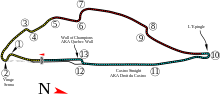 | |||
| Datum | 16 juni 1996 | ||
|---|---|---|---|
| Officiellt namn | XXXIV Grand Prix Molson du Canada | ||
| Bana | Circuit Gilles Villeneuve | ||
| Sträcka | 69 varv, 305,049 km | ||
| Vinnare | Williams-Renault, 1:36.03,465 | ||
| Pole position | Williams-Renault, 1.21,059 | ||
| Snabbaste varv | Williams-Renault, 1.21,916 (varv 67) | ||
| Temperatur | cirka 26° | ||
| |||
Kanadas Grand Prix 1996, officiellt XXXIV Grand Prix Molson du Canada, var ett Formel 1-lopp som kördes 16 juni 1996 på Circuit Gilles Villeneuve i Montréal i Kanada. Loppet var det åttonde av sammanlagt sexton deltävlingar ingående i Formel 1-säsongen 1996 och kördes över 69 varv.
Resultat
- Damon Hill, Williams-Renault, 10 poäng
- Jacques Villeneuve, Williams-Renault, 6
- Jean Alesi, Benetton-Renault, 4
- David Coulthard, McLaren-Mercedes, 3
- Mika Häkkinen, McLaren-Mercedes, 2
- Martin Brundle, Jordan-Peugeot, 1
- Johnny Herbert, Sauber-Ford
- Giancarlo Fisichella, Minardi-Ford
Förare som bröt loppet
- Pedro Lamy, Minardi-Ford (varv 44, kollision)
- Luca Badoer, Forti-Ford (44, växellåda)
- Gerhard Berger, Benetton-Renault (42, snurrade av)
- Michael Schumacher, Ferrari (41, bakaxel)
- Olivier Panis, Ligier-Mugen Honda (39, motor)
- Mika Salo, Tyrrell-Yamaha (39, motor)
- Pedro Diniz, Ligier-Mugen Honda (38, motor)
- Rubens Barrichello, Jordan-Peugeot (22, koppling)
- Andrea Montermini, Forti-Ford (22, elsystem)
- Heinz-Harald Frentzen, Sauber-Ford (19, växellåda)
- Jos Verstappen, Footwork-Hart (10, motor)
- Ricardo Rosset, Footwork-Hart (6, kollision)
- Ukyo Katayama, Tyrrell-Yamaha (6, kollision)
- Eddie Irvine, Ferrari (1, upphängning)
VM-ställning
Förarmästerskapet | Konstruktörsmästerskapet
|
| ||||||||
| |||||
Media som används på denna webbplats
Black left-pointing triangle ◀, U+25C0 out of Unicode-Block Geometric Shapes (25A0–25FF)
Black right-pointing triangle ▶, U+25B6 out of Unicode-Block Geometric Shapes (25A0–25FF)
The Flag of Europe is the flag and emblem of the European Union (EU) and Council of Europe (CoE). It consists of a circle of 12 golden (yellow) stars on a blue background. It was created in 1955 by the CoE and adopted by the EU, then the European Communities, in the 1980s.
The CoE and EU are distinct in membership and nature. The CoE is a 47-member international organisation dealing with human rights and rule of law, while the EU is a quasi-federal union of 27 states focused on economic integration and political cooperation. Today, the flag is mostly associated with the latter.
It was the intention of the CoE that the flag should come to represent Europe as a whole, and since its adoption the membership of the CoE covers nearly the entire continent. This is why the EU adopted the same flag. The flag has been used to represent Europe in sporting events and as a pro-democracy banner outside the Union.The civil ensign and flag of Belgium. It is identical to Image:Flag of Belgium.svg except that it has a 2:3 ratio, instead of 13:15.
Flag of Portugal, created by Columbano Bordalo Pinheiro (1857–1929), officially adopted by Portuguese government in June 30th 1911 (in use since about November 1910). Color shades matching the RGB values officially reccomended here. (PMS values should be used for direct ink or textile; CMYK for 4-color offset printing on paper; this is an image for screen display, RGB should be used.)
(c) Rdikeman at the English Wikipedia, CC BY-SA 3.0
Jacques Villeneuve, Canadian Grand Prix, Montreal, 1996
Författare/Upphovsman: Cbuckley, Licens: CC BY-SA 3.0
Layout of the Gillew Villeneuve circuit between 1996 and 2001
